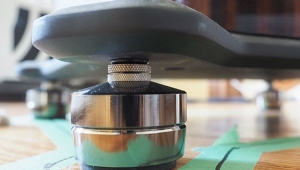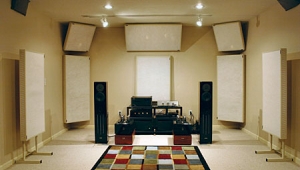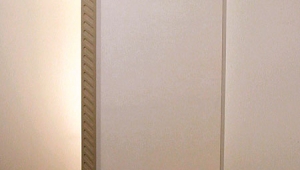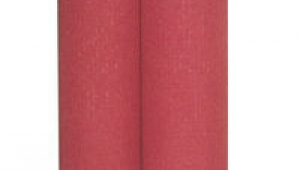| Columns Retired Columns & Blogs |
Room Tuning: ASC Tube Traps & the MATT Test Page 2
The sonic effects were more subtle than the measurements would suggest, but still noticeable. The Thiels had had excellent focus and precision before; with the room treatment, they became truly extraordinary. The same was true of their pure, uncolored sound: outstanding before, truly exceptional in the treated room.
The second part of the process—expanding the soundstage's width and depth, and adding ambience by incorporating reflected information—was accomplished by a systematic process of rotating the Tube Traps to expose their reflective sides. This was done in stages—first the corners, then the side walls, then the area between the speakers—checking the effect at each step. We'd play Dire Straits' "Private Investigations" (from Money for Nothing, Warner Bros. 25794-2, CD) and listen for how far out and back the marimbas were. Other tests were the muted, distant trumpet at the opening of Prokofiev's Lt. Kijé (Chesky RC10, LP) and the walls beside and behind it, and how clearly delineated were the Turtle Creek Chorale's three tiers of voices on John Rutter's Requiem (Reference Recordings RR-57, LP).
Without the benefit of a straightforward graphical analysis like the MATT test, the process of adding ambience was much more qualitative. It wasn't a matter of simply more—more depth, more width, more ambience. If too much was added, or too much was reflected directly toward the listener, the coherence of the soundstage was lost. The instruments no longer seemed to be playing in a single acoustic space, or even in similar spaces. Even individual instruments were discontinuous—upper registers or overtones would spread across a much wider space than their bottom ends or fundamentals. The result was a two-layered effect, with dramatically different image sizes above and below the break.
We ended up with very little energy reflected directly outward or at the listening position. Instead, the energy on each side was directed toward the center of a triangle formed by the front corner, the side wall's first reflection point, and a Tube Trap centered between and behind the speakers. We ran another MATT test to ensure that we hadn't changed the system's response (we hadn't), but we didn't really need to—our ears told the story. The sound was fantastic.
Where there was depth before, there was now a crystal-clear, tangible portrayal of the instruments at the rear of the stage, and of the surrounding walls of the recording venue. Image dimensionality had become holography, detail bordered on reality, and notions like "speed," "precision," and "articulation" faded away, leaving only the performers. The system wasn't changed per se; it was simply optimized. All of the CS7.2's strengths were apparent and consistent throughout, but the room tuning honed them, coddled them, merged them into a more cohesive whole. Before the tuning, the system sounded very, very good; after, it was phenomenal.
I unconditionally recommend ASC's Tube Traps, and the Echo Busters products that we used. What I really recommend, however, is the entire package: system, room treatment, tuning process, MATT test, and expert support from Bruce Brisson, Joe Abrams, and Art Noxon. Even before a single Tube Trap had arrived, Art Noxon had looked over drawings of my listening rooms and made recommendations for placements.
"This isn't just special treatment for you because you're a reviewer," he explained. "I'll do this for any ASC customer." And while he probably won't personally visit and supervise the process, part of ASC's service is to review MATT test results and support a customer through just the process we used in my room. All it takes to start is a copy of Test CD 2 and a RadioShack SPL meter. Give it a try—you'll be glad you did.
- Log in or register to post comments































